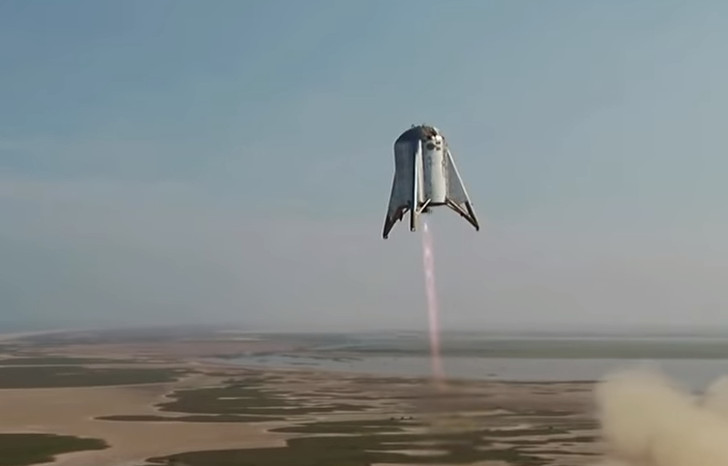Hawthorne-based SpaceX successfully completed the highest test flight yet for its newest rocket engine and a prototype of its future Starship spacecraft at its development facility in Boca Chica, Texas on Tuesday, Aug. 27.
The test flight of the company’s so-called Starhopper was aired by SpaceX live on Youtubeshowing the craft, which looks like a barrel-shaped silver water tank, lift off the ground gracefully and hover in flight as it moved sideways in an impressive display of rocket science.
The maneuver is meant to replicate landing on a distant land and then taking off again. But instead of one Raptor engine on the Starhopper, the Starship — which is expected to be the spacecraft that ferries humans to the moon and eventually to Mars — will use six Raptor engines, based on preliminary designs so far.
The test flights at the South Padre facility resemble those the company performed during development of its Falcon 9 booster to enable it to descend back to Earth for subsequent reuse. Stabilizing jets, just like on the Starhopper, fire from the sides in order to keep the craft properly aligned on its descent.
Shortly after the test flight Tuesday, SpaceX founder Elon Musk heralded its success.
“One day Starship will land on the rusty sands of Mars,” he tweeted.
Tuesday’s test flight came on the second day of a three-day window established by the Federal Aviation Administration and coordinated with the Cameron County Sheriff’s Department to close an adjacent highway and beach. The test had been postponed several times due to requirements by FAA officials, Musk revealed.
While the prototype for the Starship is ongoing on South Padre Island, construction of the actual spacecraft will take place near NASA’s Kennedy Space Center in Cape Canaveral, Florida. An environmental impact report released by NASA earlier this month details plans to develop facilities to construct Starship and its Super Heavy booster as well as construct a new launch pad.
When it’s completed, the entire rocket will stand nearly 400 feet tall and be roughly 30 feet in diameter. Preliminary designs suggest the Super Heavy booster will be equipped with 31 Raptor engines, propelling a spacecraft out of the Earth’s atmosphere capable of carrying up to 100 passengers.
By DAVID ROSENFELD | drosenfeld@scng.com | The Daily Breeze
PUBLISHED: August 28, 2019 at 9:19 am | UPDATED: August 28, 2019 at 4:15 pm





